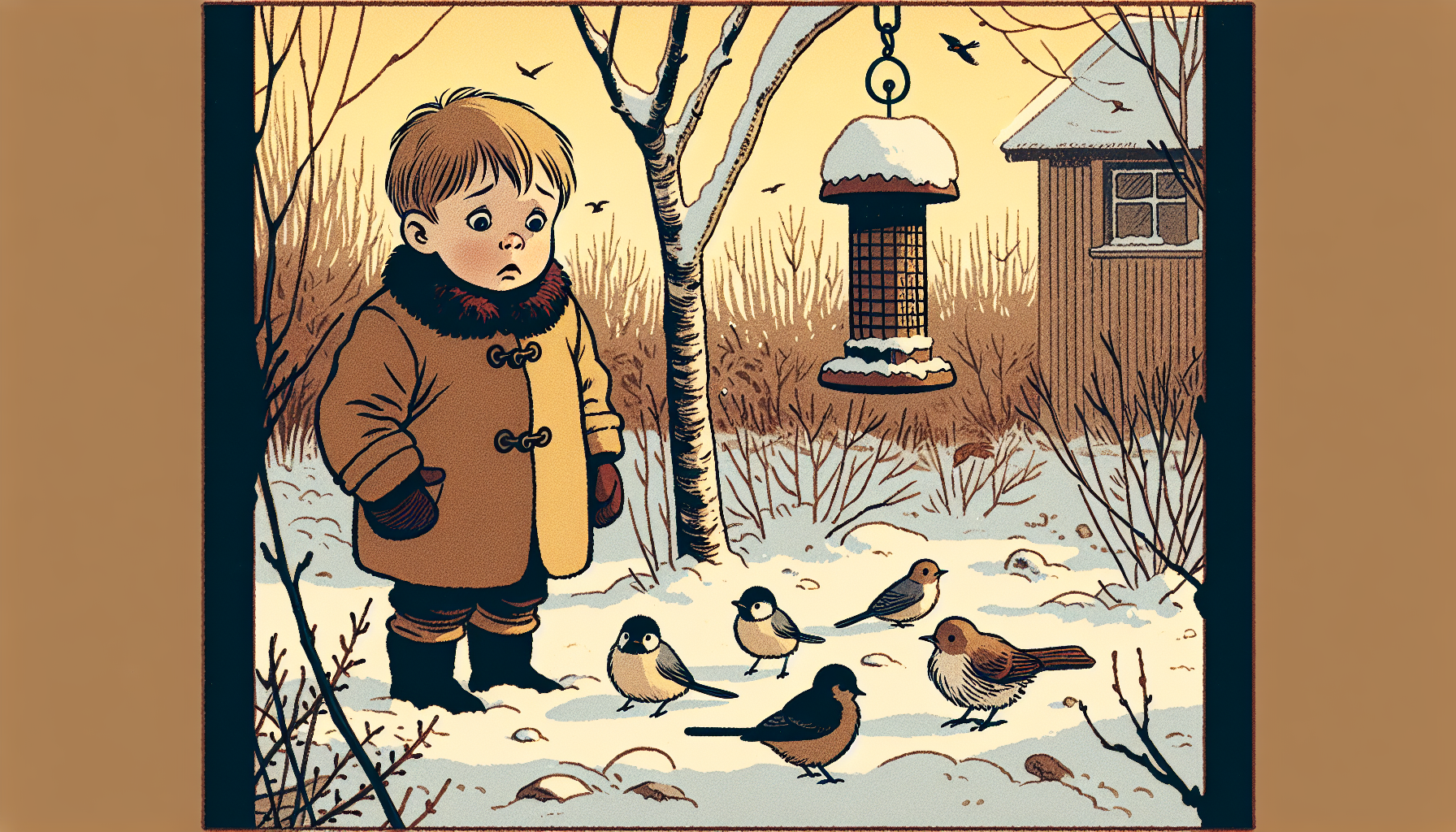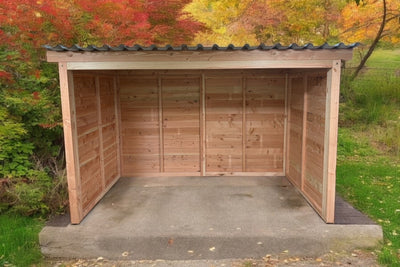Make your own tit dumplings: How to support birds in winter in Switzerland
A living garden is much more than just beautiful plants - it is a valuable biotope with space for native birds. In Switzerland, conditions range from the harsh Alpine region to the mild Central Plateau, which is why near-natural care makes particular sense. Many garden owners notice fewer bird visits, especially in winter when natural food becomes scarce. Making tit dumplings yourself is a simple, effective solution: the fat food provides energy, supports species such as great tits, blue tits and sparrows and strengthens the garden ecosystem. In this article, we show you step by step how to make your own bird food, what to look out for in terms of ingredients and placement and how to avoid mistakes. How to feed birds in winter in a targeted and sustainable way - with recipes, practical tips and regional advice for the garden and balcony.
Why tit dumplings are important in the garden

When it's cold outside and the food supply becomes scarce, granivores and insectivores come under pressure. Species such as tits, sparrows and nuthatches find fewer seeds and insects in winter. Making your own fat balls helps to close the supply gap and help birds safely through the cold season.
What are the benefits of fat balls for birds?
Tit dumplings combine energy-rich fats with seeds and nuts - exactly what wild birds need in winter. They
:- Provide vital calories in sub-zero temperatures
- Replace missing insects and seeds in the snowy countryside
- Support parent-feeding birds even during long winters
- Contribute to biodiversity in urban areas
Especially in cities and conurbations with sealed surfaces, making your own tit dumplings and targeted feeding stations can create important stepping stones for native bird species.
How do tits support garden health?
Tits are natural pest controllers and reduce caterpillars, aphids and other insect pests. A great tit eats numerous caterpillars in summer, including those of box tree moths and frost moths. With tit dumplings in winter, you can secure these helpers for the spring - without any pesticides.
Robins and wrens also stabilize the ecological balance. If you can make your own fat balls and place them wisely, you will promote biodiversity and garden health in the long term.
The best materials for sustainable fat balls
Homemade fat balls are often cheaper and more environmentally friendly than ready-made products. Many conventional variants contain palm oil, plastic netting or fillers. With the right ingredients, you can make nutrient-rich, plastic-free fat balls yourself - ideal for the garden and balcony.
What do I need to make them?
The basic ingredients for high-quality fat balls are
:- Vegetable fat or beef tallow, unhardened and unsalted (e.g. coconut fat or butcher's tallow)
- Sunflower seeds, preferably shelled
- Oat flakes as a fat binder and energy source
- Unsalted nuts, chopped (hazelnuts, walnuts)
- Raisins or dried berries for soft feeders such as blackbirds
Optional as a shaping aid
:- String, jute ribbon or wire for hanging
- Old cups, half coconuts or disused muffin tins
Where can I find the right ingredients in Switzerland?
You can find ingredients in organic food stores, health food shops or at Wholesalers such as Coop, Migros or Landi. Ask butchers for beef suet - regional, additive-free and ideal for making your own tit dumplings.
For larger quantities, online stores offer sustainable bird seed. Look for clear declarations without preservatives or salted components. Background information is provided by the Sempach Ornithological Institute at vogelwarte.ch.
Step-by-step instructions for making your
own tit dumplings Making your own tit dumplings is an ideal winter project for families. With just a few simple steps, you can create a customizable tit dumpling recipe that can vary depending on the bird species and weather conditions.
Preparing the ingredients and utensils
Prepare the following items
:- 100 g unsalted vegetable fat or suet
- 150-200 g feed mix: sunflower seeds, oat flakes, nuts, berries
- 1 string or branch as a holder
- 1 small mold (e.g. flower pot, silicone muffin tin, cup, half an orange peel)
- 1 pot and spoon
Melt the fat slowly in the pan, do not allow to boil. Remove the mixture from the heat and leave to cool slightly so that the grains bind evenly later.
Instructions for preparation and shaping
Mix in the feed mix until a homogeneous mass is formed. If the mixture is too runny, add oat flakes. Pour the mixture into prepared molds, for example into pots with jute ribbon threaded through them or half coconuts.
For free-hanging dumplings, form balls and press a string into the middle. Then leave to harden in the fridge or outside at below 5 °C for at least 2 hours. For safety and bird protection, use tit dumplings without netting, instead use spirals or sturdy holders made of natural material.
Tip: If you want to make your own titmouse dumplings and want variety, you can make portions with a finer mix for soft feeders and coarser cores for tits.
Tips for placing tit dumplings safely in the garden
The correct position increases acceptance and safety. If you want to make your own titmouse dumplings and place them effectively, make sure you have clear approach routes and quick cover.
Where do I place the fat balls for maximum visibility?
Birds prefer highly visible, easy-to-fly places with a retreat option
:- At a height of 1.5 to 2 m, out of reach of cats
- 5 to 10 m away from windows to avoid collisions
- Near hedges or trees for protection from birds of prey
- Not directly above feeders due to contamination
A sheltered place with some morning sun is ideal. In windy locations, an easterly orientation is best so that you can make your own tit dumplings and hang them up even in breezy conditions.
Child safety: What to look out for when hanging up?
Special care must be taken in family gardens
:- Do not attach strings at head height
- No wire at choking height of playing children
- Do not use brittle branches as supports
Place the dumplings where children can see them but not touch them. This keeps the food hygienic and makes making your own tit dumplings a safe learning experience.
Avoid common mistakes and ensure quality
Many DIY bird feeders work straight away, but a few stumbling blocks can be easily avoided. If you want to make your own tit dumplings and offer them successfully, use fresh, natural ingredients and clean hangers.
The wrong ingredients: What should I avoid at all costs?
These substances harm birds or reduce success:
- Salted peanuts or nuts - puts a strain on the kidneys
- Old or rancid fat - harmful to feathers
- Bread, pastries or fruit slices - unsuitable for digestion
- Plastic nets - risk of injury and suffocation
Use regional, untreated ingredients. BirdLife and the Sempach Ornithological Institute offer sound advice: birdlife.ch and vogelwarte.ch.
How often should I replace the fat balls?
Check every 5-10 days and replace if necessary. Damp weather causes seeds to stick together and fat to soften, and there is a risk of mold. Making tit dumplings yourself allows you to make small batches that stay fresh.
If a dumpling remains untouched for longer, change the location. Birds often need a few days to accept new feeding places. Remove all leftovers in spring, when the focus is on protein-rich food for young birds.
Costs and sustainability of your own tit dumplings
Homemade tit dumplings are appealing, individual and ecologically sound. If you want to make your own fat balls, you retain control over quality, packaging and transportation routes.
What are the costs of DIY production?
The basic costs are around CHF 3-5 for 6-8 dumplings without elaborate molds
:- 200 g coconut fat: around CHF 2.50-3.00
- 200-300 g feed mix: around CHF 1.50 (sunflower seeds, oats, nuts)
- Reusable string or containers: usually available in the household
Local ingredients and natural materials are often even cheaper to produce. This is worthwhile for larger gardens, schools or clubs.
Is home-made really more sustainable than store-bought products?
Yes, if you shop consciously. Many ready-made dumplings contain palm oil, contain fillers with little nutritional value or are packaged in plastic nets. Making tit dumplings yourself saves on packaging, reduces transport routes and creates transparency about the ingredients.
You can find additional tips on natural feeding at NABU: nabu.de. How to combine bird protection and garden practice in everyday life.
Conclusion: Achieve a great effect in the garden with little effort
Make your own tit dumplings combines sustainability, closeness to nature and practical help for garden birds. With just a few ingredients, you can provide vital energy in winter and strengthen the ecological balance in your environment at the same time.
Whether as a family project or as part of nature-oriented garden maintenance - your bird feeders will bring life to your garden and make the cold season a tangible experience. Start your garden project now and discover more tips on feeding stations, seeds and biodiversity.


